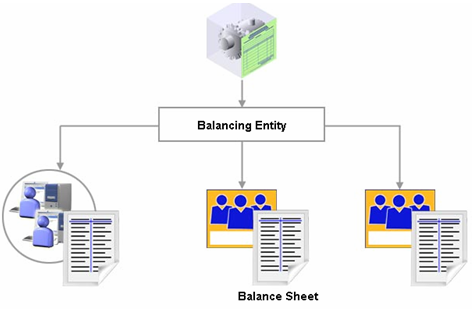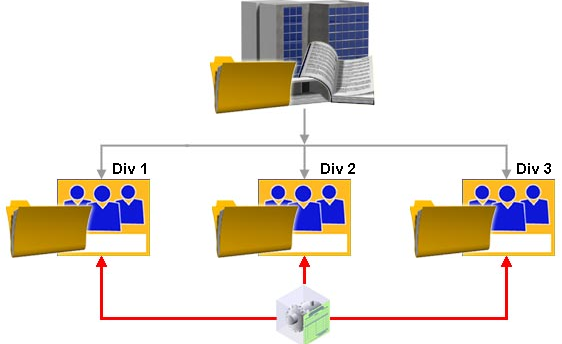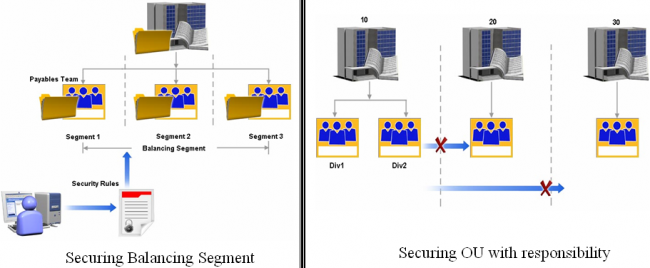A balancing entity is one for which you prepare a balance sheet as a balancing segment value in the Accounting Flexfield structure. In any OU, you can have multiple balancing entities and each of these must balance within itself.
In oracle applications, all intercompany entries are automatically created within the SOB to ensure that companies are never out of balance. A legal entity can have one or more than one balancing segments. For example, you may have multiple companies defined in your COA reporting to a single legal entity.
How to decide Legal Entities and OUs
There two things one should consider while creating legal entities
1. The number of fisical and tax report the organization has to produces – for each distinct values we should create one legal entity.
2. The number of entities for which the company produce balance sheet – for each distinct values we should create one legal entity.
An operating unit a is a fincial entity in a business group that engages in transactions with outsiders and for which you want to track the finalcial transactions.
OU deals with 5 subledgers – OM, AR, PO, AP and GL
Security and Subledgers decides how many operating units one should create in a business group.
Each company defined in your COA may have multiple divisions which you produc balance sheets. In that case, it is likely that each company in the COA is setup as a legal entity and each division is setup as an OU.
Securing values
Oracle Applications does not automatically secure balancing segment values within your COA with specific legal entities or OU. You can create security rules to ensure this security requirement. For example, you can ensure that the payables team may access invoices of a specific division. If security rules are not defiend, access to all divisions will be available.
To explain different balancing entities, assume that there is one GL SOB, balancing segment value is the company segment, and that there are three companies 10, 20 and 30. You should ensure that OUs are associated with responsibilities, and each responsibility is associated with one and only one OU. In the case the company 10 is a legal entity in which two divisions Div1 and Div2 are defined as OUs. You can create a security rule to ensure that when users log in with a particular responsibility, they should only be able to enter transactions with compnay 10, and the users from company 20 and copnmany 30 should not be allowed.




Leave a Reply
Want to join the discussion?Feel free to contribute!